Hamish’s recent foray into the world of SLRs with his project involving a Nikon F75 struck a chord with me. While I am big on compact cameras, I have quite a few of them that I’d like write up about, the photographic misadventures of last few months resulted in me buying a 2000 Canon EOS 33 film SLR. Allow me to sketch out my path to this very late 20th century gem.
Last year, my summer started off on the wrong foot. Second of July while on a trip my beloved Minolta TC-1 died. Apparently a flex cable transmitting the aperture information gave in and all apertures but f/16 resulted in camera not firing, as if an in-between value has been selected. After a week of deliberating about what camera should I replace the TC-1 with, I opted to buy another one from e-bay. This one turned out to have the dreaded light leak. The seller did not respond to any of my messages so I was stuck with two broken cameras. To be honest, the second one is fine, if you take it out of the pocket or case, take a picture and put it back in so the light does not have a chance to get in. The TC-1s are now in some repair center in Prague hopefully being frankensteinend into a one fully working one. But my hopes are low.
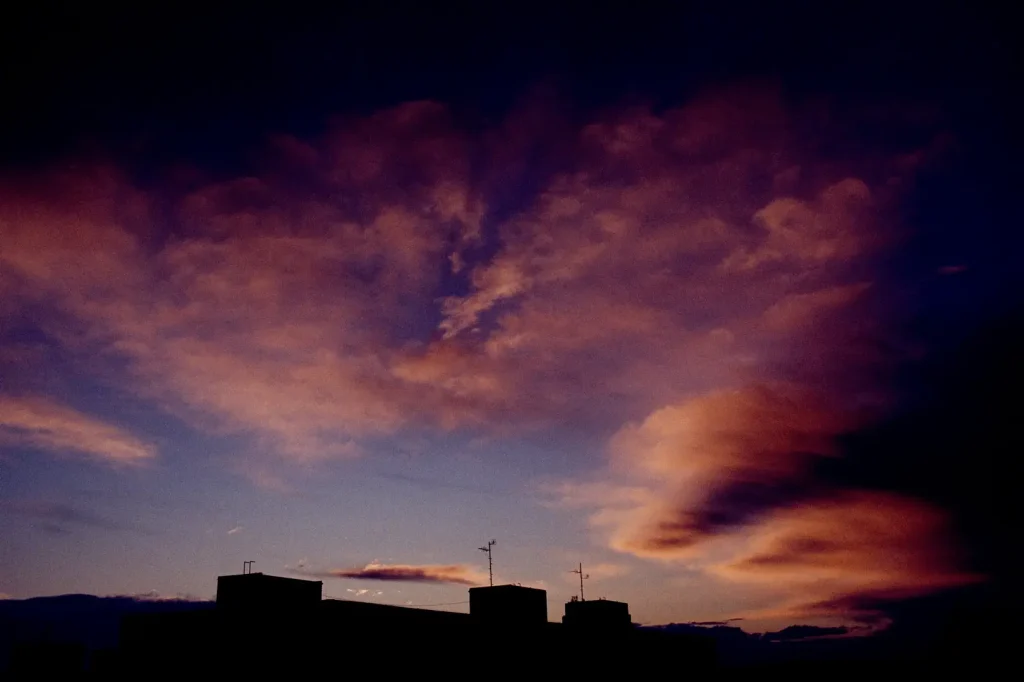
Fast forward few months. I am in Japan and I bought myself a nice looking OM-4 Ti. I am big OM guy, I have bunch of lenses, two OM-1 bodies… The OM-4 allowed me to take hundreds of wonderful pictures in Japan but some time after getting back, the spot meter button stopped working. I took the camera to the repair center, first time they summoned me saying the camera was fixed, they did not fixed anything and now, the camera is there again.
All these experiences left a very bitter taste in my mouth (and a dent in my savings account). Dismayed, I browsed local auctioning site. Since I own Canon 5D Mark II and four primes I was thinking about giving a film EOS a shot. I’ve found quite a few Canon SLRs like EOS 300V, EOS 750, EOS 50, EOS 33… most of them are quite old (the 750 is from 1988) or they run on rather expensive batteries (2CR5 in case of EOS 50). However the Canon EOS 33 runs on two CR123A (I have plenty of them as the TC-1 uses them) and is no slouch. Actually I’d compare it the modern day 6D/7D in terms of prosumer/customer aim. The best part? I paid 19 dollars and I could pick up in person the day the auction ended in my own town.
So here I am, with a Canon EOS 33, a camera that has none of the brass and steel charm or manual controls I enjoy so much. Where do I go from here?
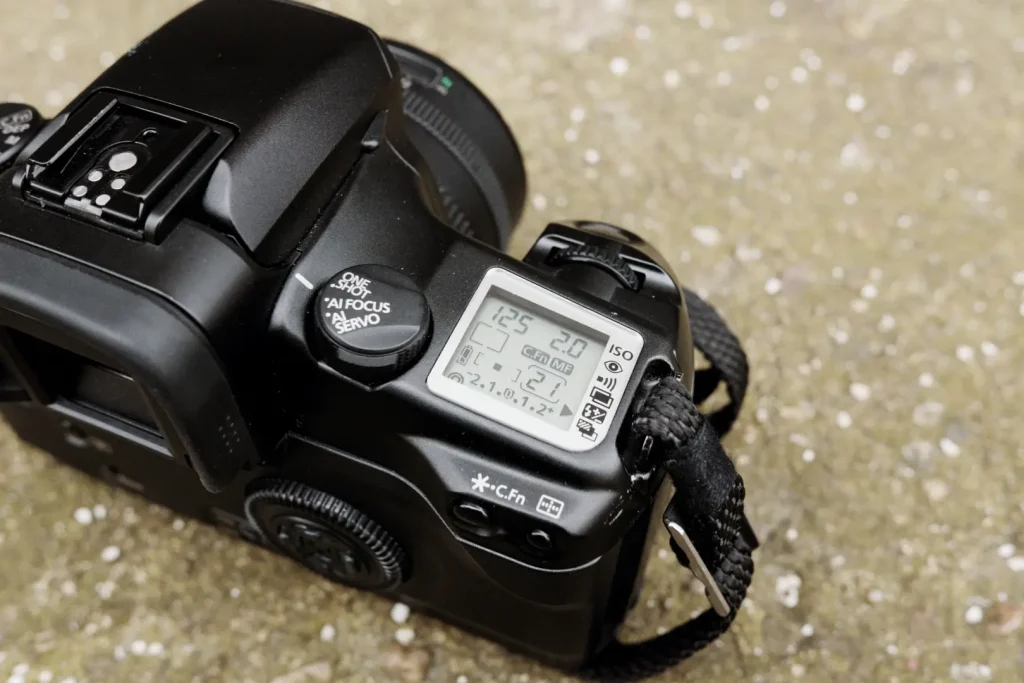
Canon EOS 33 Ergonomics
If you’ve ever handled any contemporary low level Canon DSLRs, then you’d have a pretty good idea of how the Canon EOS 33 feels in the hand. The grip was sticky as the coating has disintegrated over the years but rubbing alcohol took care of that. Now the grip does not feel soft rubbery at all but I don’t mind that. I prefer this than rubber that is getting stretched and loose over the years. Here the grip sits tightly in place still providing a good grip for the hand.
The viewfinder is clean, much cleaner than the one in my 5D Mark II as I’ve dragged that camera through all sorts of hell. It is also a bit bigger than viewfinders in low level Canon DSLRs but noticeably smaller than in the 5D2 but good enough. There are seven focusing points that are pretty well spread out.

On the left side, there is a drive selector and mode selector that contains stuff like portrait or sport mode but there is also a good ole PASM. On the right side, there is AF drive selector that I don’t really care about and handy LCD that is sadly missing a back light. This light was added some 3 – 4 years later in EOS 33V. I find my finger reaching for the non-existent button every time I shoot in the dark.
On the back, there is a large thumbwheel to change the exposure settings and four way selector for choosing focusing points. Buttons for function selection and metering are also located on the back as these aren’t so frequently used. Last thing to note, the top shell and flash cover are actually metal. Only the back and the bottom are made of plastic. That being said the Canon EOS 33 is on the light side and does not feel cheap but it will not break your neck.
Canon EOS 33 Functions
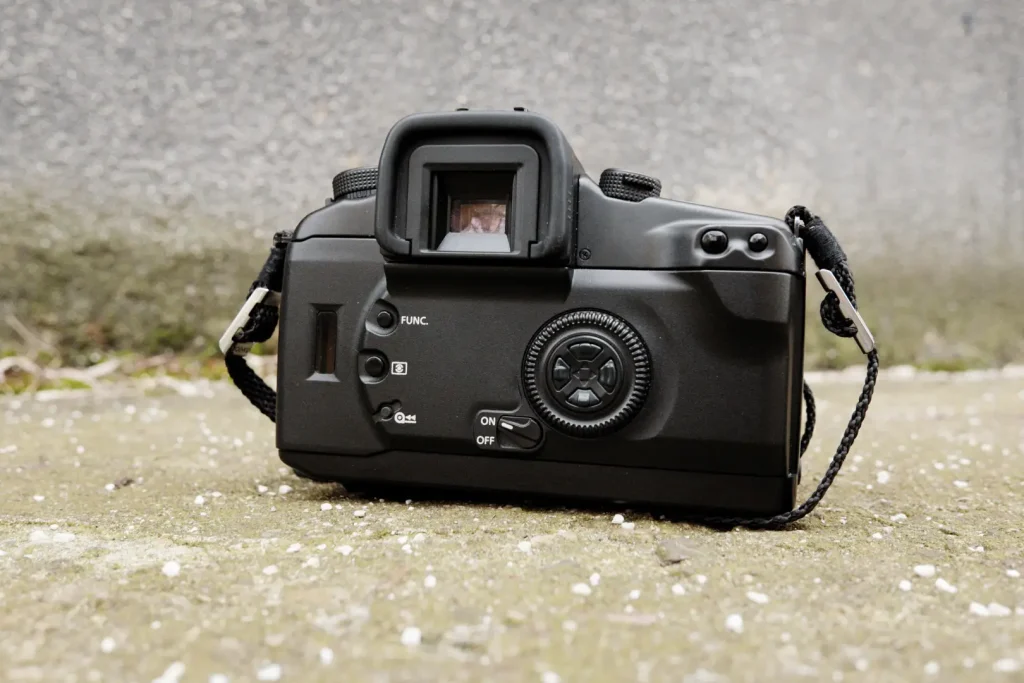
Let’s start with a function that my Canon EOS 33 does not have – an eye control. That’s right, the image on the Canon site will show you a picture of a camera with the Eye Control icon but not all models were equipped with it. This was a bit of a let down as I’d love to give it a try but on the other hand, I only use the center point, even on my 5D2, anyway. The rest of the focusing points in most Canon SLRs are either unreliable, not cross type, too bunched up in the center or all of the above. The EOS 33 apparently have interchangeable focusing screen and you can get a split image type from the internet (for about 90 dollars). I though about getting one but I cannot bring myself to shell out 5 times the camera’s worth for focusing screen. And anyways, I use AF on compact cameras all the time so what’s wrong with using it with SLR?
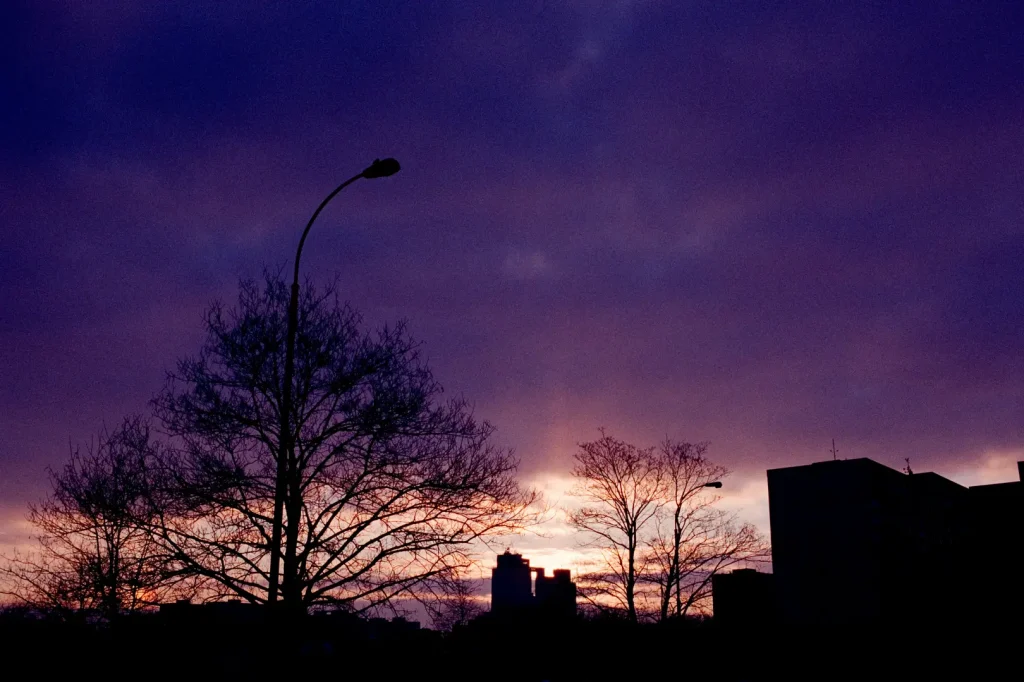
The Canon EOS 33 offers three types metering, which can be changed by a dedicated button on the back and rolling the front wheel. These modes are evaluative (this can also be tied with the selected focusing point via custom functions), partial (it meters from about 10% of the center of the frame) and center weighted. There is no spot metering. Which one should you choose? In most scenes this does not really matter. When photographing sunset, it can give a difference of about 1 EV depending on what type of metering are you using. I also find the metering to be a quite sensitive. I took the camera for a night photo shoot and it performed very well.
Rest of the functions can be accessed by the function button. These include ISO override (using custom functions you can also disable reading the DX code and having the ISO set manually), red eye reduction (it will light a lamp, making people’s pupils contract resulting in less pronounced red eye effect), beep on/off (it’s off, thank god for this function), double exposure (now this sounds fun but I haven’t yet tried it, it allows you to take as much as 10 shots on single frame), flash exposure compensation and exposure bracketing.
The exposure itself can be compensated plus or minus 2EV and all steps no matter if it’s aperture, shutter speed or compensation are done in half EV steps. ISO steps are of course in thirds.
What is worth mentioning are the custom functions. Canon cameras usually have a selection of overrides that the user can customize in some manner. For example splitting the focus lock and exposure lock from shutter button into two buttons (using AE-L/AF-L button). Another setting is speed of film rewinding. You can select silent or fast. The fast is super fast – it takes about 5 seconds to rewind the film and it’s actually quite quiet. Definitely quieter than most whirling compacts though I haven’t heard the silent mode. What you can also select is whether the camera should leave the film lead out or if it should rewind it in to the cartridge. This certainly is handy.
Use
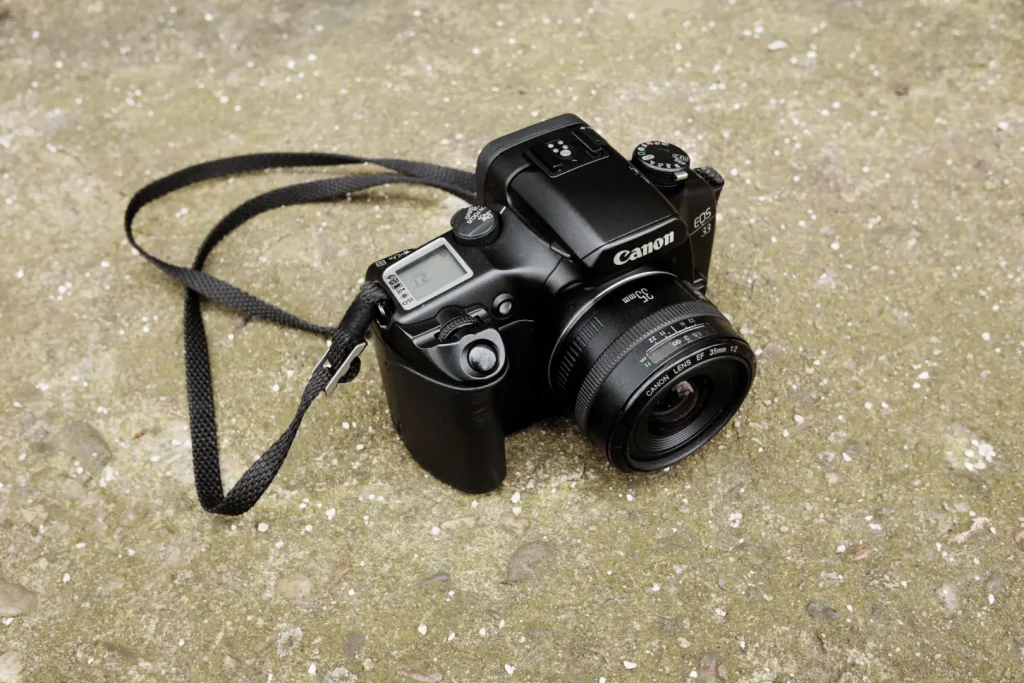
Coming from the OMs and likes, this camera certainly handles differently. On the other hand I used to shoot 450D until I broke its shutter on 78k+ shots and since then I’ve been shooting 5D Mark II for what feels like ages (7 years). I own four primes – 24/1.4 L, 35/2 (the old one), 50/1.4 USM and 85/1.8 USM so it does not feel foreign to me at all. The opposite might actually be true as after I take the shot I look at the back as in chimping. This or the lack of stroke winding the film also makes me shoot more than I should. I am left eyed and I have to take the camera away from the face when advancing a frame. This gives me time to think about the scene outside the boundaries of the viewfinder. With the motorized advance I tend to shoot more frames in quick succession.
In some manners the Canon EOS 33 feels like a hybrid between the compacts (AF, motor drive, flash…) and SLR (large viewfinder, all the bells and whistles). My world of cameras was pretty sharply divided – on one side I had the full manual SLRs – on the other were point and shoots. What I tolerated in one kind was absolute no no in the second one. What a snob I am.
The lens that best fits the camera is the old type of non USM 35mm f/2. I bought this lens maybe in 2008/9 for the 450D as it was about fifty on crop and then continued using it on 5DII. It’s wonderfully small and light, it has a metal mount, hard stop at infinity and real mechanical focusing scale when switched to MF. This lens once again proved it’s worth. I just wish all my gear would be this useful. I’ve tried the 24/1.4L as well but it makes the camera very front heavy and bulky. I am thinking about getting the old 28/2.8 as I am 28mm guy though.
With the 35mm mounted, the Canon EOS 33 is well balanced and provides me with all I could need from a film camera. Canon’s E-TTL flash works wonders (there is a pop up flash and I own two Canon flash guns). The weight of this combo is pretty nice and I don’t mind having it around my neck one bit.
Canon EOS 33 Quirks
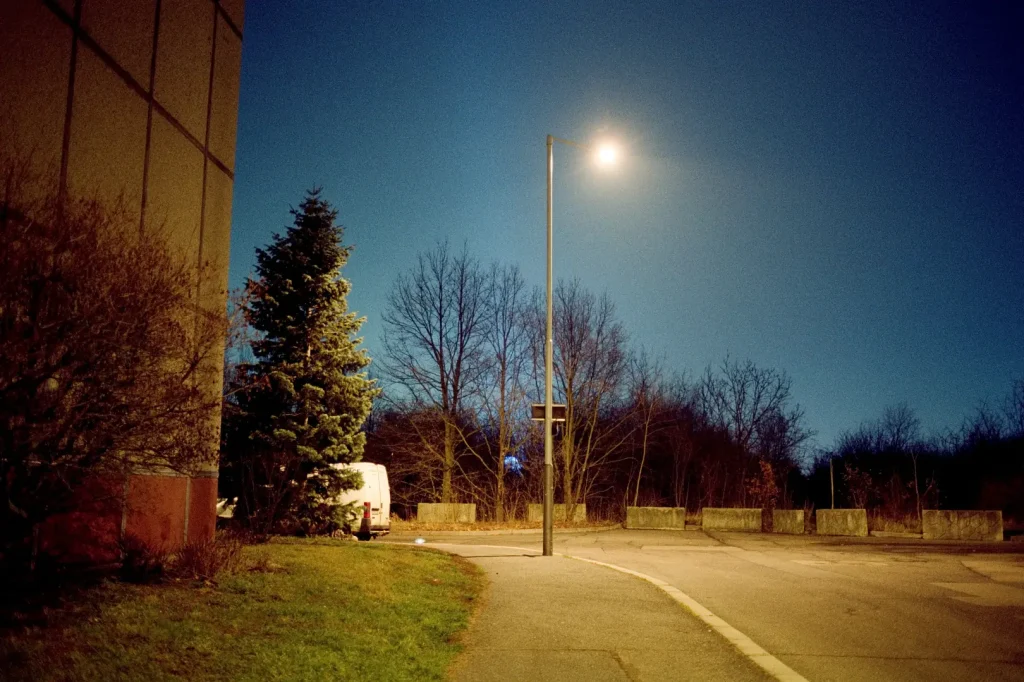
There is however one quirk that I need to tell you about. The Canon EOS 33 won’t meter properly with manual lenses. I have an OM-EOS adaptor without chip for the 5D2 and the 5D2 meters correctly through the manual lenses even when stopped down (while in range of sensitivity of the metering cell). The EOS 33 on the other hand is completely off. I had to set the ISO to 20 to get correct reading for ISO 100 film and I am not quite sure if this error is consistent with different light levels. Searching on the internet, this seemed to be a known issue with the model. I have yet to get my hands on some adaptor with chip and see if it changes in some way. I have OM lenses ranging from 17mm to 200mm including a shift lens so it would be nice if I could use them. Well I can use them but have to set the shutter speed manually. Even though the metering is off, the flash exposure is spot on even with manual lens stopped down. I think this might be because of the E-TTL, where the camera first fires a test flash, meters the light that gets back and then sets the full power accordingly.
Summary
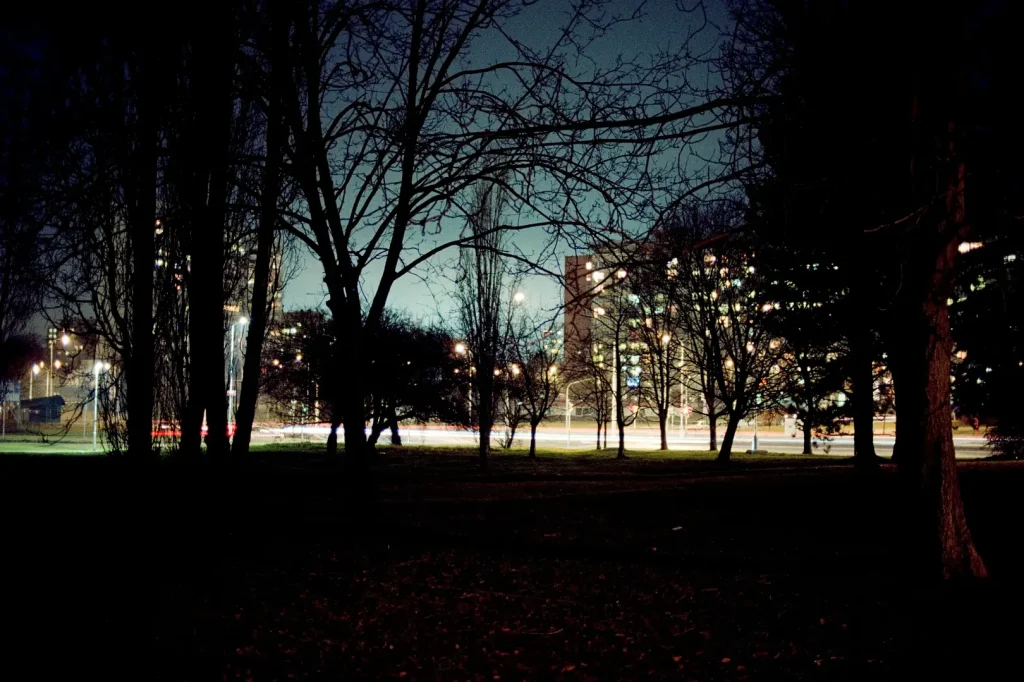
What started as a cheap “why not” splurge is now a valued piece of my kit. The Canon EOS 33 is the only fully functioning SLR in my house right now. Except the initial 19 dollars and cleaning the grip, there were no other costs. Batteries, lenses or even IR remote trigger were just waiting in my drawers. It takes photos on film, they look like any other photos I am taking with different cameras, it’s light, it’s unassuming yet capable… it’s just not a manual SLR… and I don’t care one bit.
Share this post:
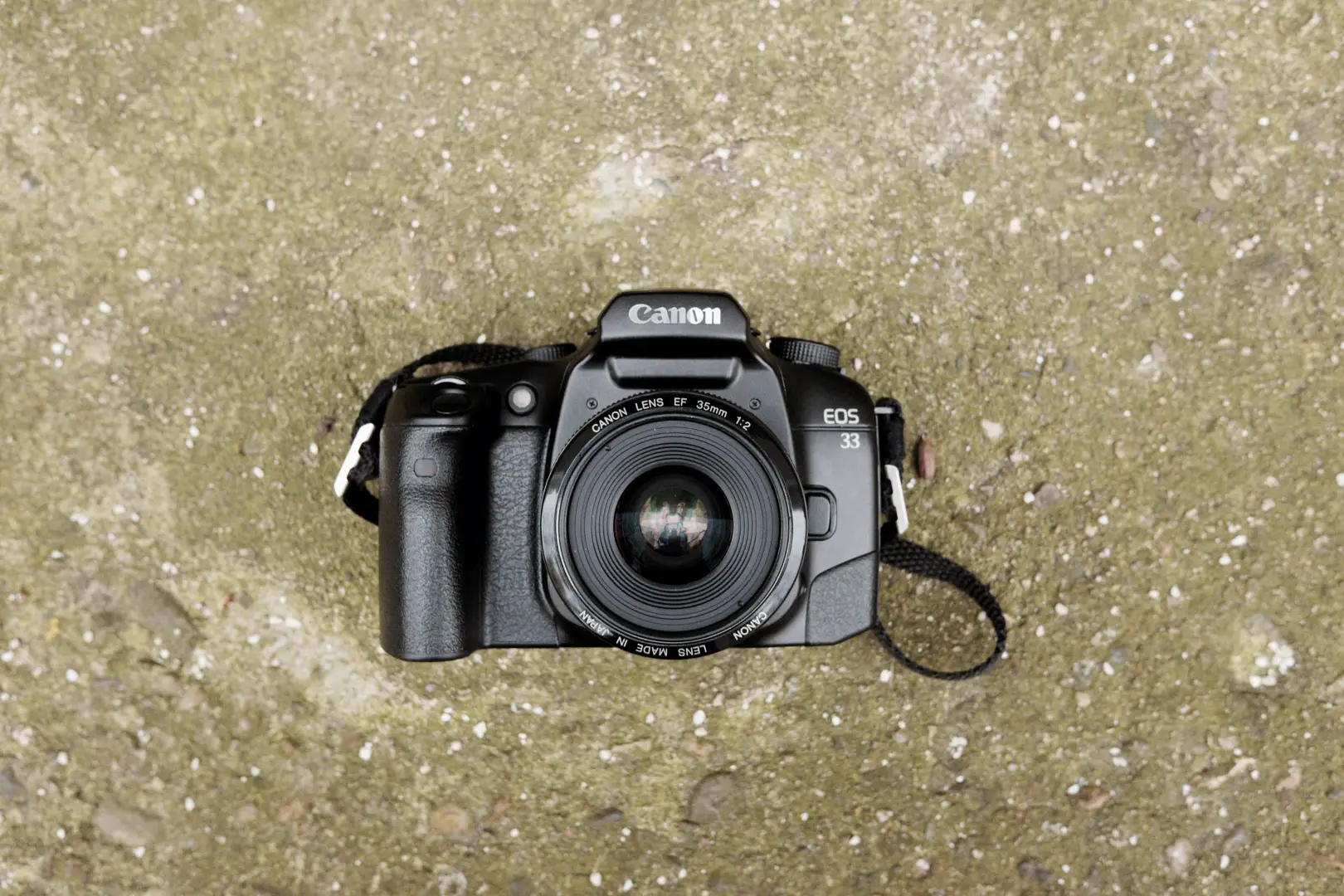








Comments
jim on Canon EOS 33 Review – An overlooked treasure – By Benn Murhaaya
Comment posted: 31/03/2018
Comment posted: 31/03/2018
Ant Lockyer on Canon EOS 33 Review – An overlooked treasure – By Benn Murhaaya
Comment posted: 31/03/2018
Comment posted: 31/03/2018
Mauro Pastore on Canon EOS 33 Review – An overlooked treasure – By Benn Murhaaya
Comment posted: 05/04/2018
The your is a beautiful review of the EOS 33 which actually is my main 35mm camera for "serious" works.
My 50mm is always mounted on it and the 85mm is its perfect companion for portrait sessions.
The ergonomic of the camera is brilliantly designed and the battery pack makes extremely easy handle it for portraiture. The limited number of focusing points is the weakest point in my opinion, however I can easily survive with this.
Actually I am tring to get an EOS 30v because of the eye-control function. I have really appreciated and enjoyed using this feature with EOS 5 (A2).
I wish you enjoy this brilliant camera as much as I do.
Cheers,
Mauro Pastore
Comment posted: 05/04/2018
JONATHAN MACDONALD on Canon EOS 33 Review – An overlooked treasure – By Benn Murhaaya
Comment posted: 05/05/2018
Tom on Canon EOS 33 Review – An overlooked treasure – By Benn Murhaaya
Comment posted: 18/11/2018
I have the 30V, which is the latest and greatest in this series. It has a nicer finish, embossed marks instead of paint, and the AF sensor is better.
I keep three of them - one loaded with BW, one E6, and one C41
5 Frames With... Fuji Pro 400H (EI 800 / 35mm / Canon EOS 33) - by Geoff Roughton | EMULSIVE on Canon EOS 33 Review – An overlooked treasure – By Benn Murhaaya
Comment posted: 22/07/2019
Jasmine W on Canon EOS 33 Review – An overlooked treasure – By Benn Murhaaya
Comment posted: 07/08/2019
John Gateley on Canon EOS 33 Review – An overlooked treasure – By Benn Murhaaya
Comment posted: 08/04/2020
joe on Canon EOS 33 Review – An overlooked treasure – By Benn Murhaaya
Comment posted: 18/06/2023
what film to buy for the EOS33?
complete newbie in cameras digital or otherwise